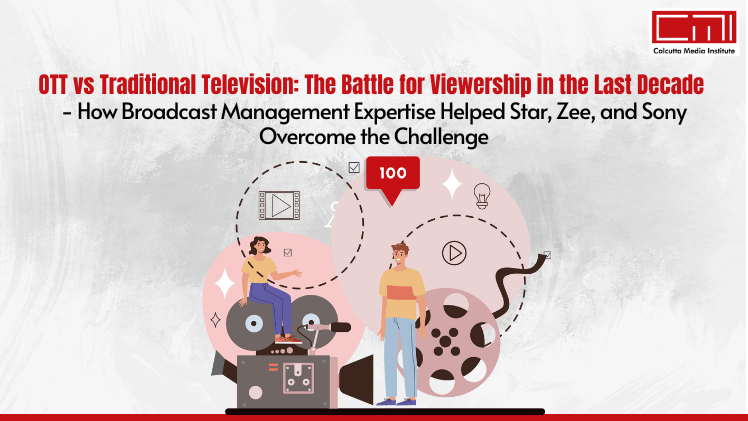The last decade has witnessed a significant shift in the way people consume television content. The rise of over-the-top (OTT) platforms such as Netflix, Amazon Prime Video, and Hulu has disrupted the traditional television industry, leading to a decline in viewership for traditional television networks. However, major broadcasting networks such as Star, Zee, and Sony managed to navigate this challenge and remain relevant in the changing media landscape. This blog explores how broadcast management expertise helped these networks overcome the challenges posed by the rise of OTT platforms.
Reasons behind the growth of OTT platforms:
The growth of OTT platforms can be attributed to several factors. Firstly, the rise of smartphones and high-speed internet has made it easier for people to access and consume video content on the go. Secondly, the availability of a wide range of content on OTT platforms has made it an attractive alternative to traditional television. Finally, the ability to binge-watch entire seasons of shows on OTT platforms has also contributed to their popularity.
Impact of OTT Platforms on traditional television viewership:
The rise of OTT platforms has led to a decline in viewership for traditional television networks. According to a report by Ernst & Young, the total TV viewership in India declined from 580 million in 2016 to 560 million in 2018. The report also states that OTT platforms have become the preferred choice of entertainment for millennials and Gen Z. This has forced traditional television networks to adopt new strategies to remain relevant in the changing media landscape.
Strategies adopted by broadcasting networks to remain relevant:
Broadcasting networks are well acquainted with the changing audience profile for a long time. They have the necessary knowledge of the industry, consumers and producers, and the evolving technologies to adapt to the changing viewers’ choices and preferences. To remain relevant in the changing media landscape, broadcasting networks have adopted several strategies. Firstly, they have developed their own OTT platforms to compete with the likes of Netflix and Amazon Prime Video. For example, Star launched its own OTT platform, Hotstar, in 2015. Secondly, they have invested in content creation and acquisition to provide viewers with high-quality and engaging content on both platforms. Finally, broadcasting networks have expanded their digital presence by launching apps and websites to cater to the changing preferences of viewers. By taking up these measures the broadcasting networks are able to end the rivalry between OTT and traditional television channels.
Role of broadcast management expertise:
Broadcast management expertise played a crucial role in helping networks like Star, Zee, and Sony overcome the challenges posed by the rise of OTT platforms. Broadcast management involves the planning, organizing, and controlling of the production and distribution of television content. It requires a deep understanding of the television industry and the ability to adapt to changing trends and technologies.
If you’re interested in pursuing a career in broadcast management, a Post Graduation Diploma in Media Management with a specialization in Broadcast Management can help you gain the necessary skills and knowledge. This program provides a comprehensive understanding of the media industry, including traditional television and OTT platforms. It also covers topics such as content creation and acquisition, distribution, and digital marketing. By pursuing this program, you can learn how to overcome the challenges posed by the changing media landscape and create a successful career in broadcast management.
In conclusion, the rise of OTT platforms has disrupted the traditional television industry, leading to a decline in viewership for traditional television networks. However, broadcasting networks such as Star, Zee, and Sony managed to navigate this challenge by investing in content creation and acquisition, developing their own OTT platforms, and expanding their digital presence. Broadcast management expertise played a crucial role in helping these networks overcome the challenges posed by the rise of OTT platforms. If you’re interested in pursuing a career in broadcast management, a Post Graduation Diploma in Media Management with a specialization in Broadcast Management can help you.


